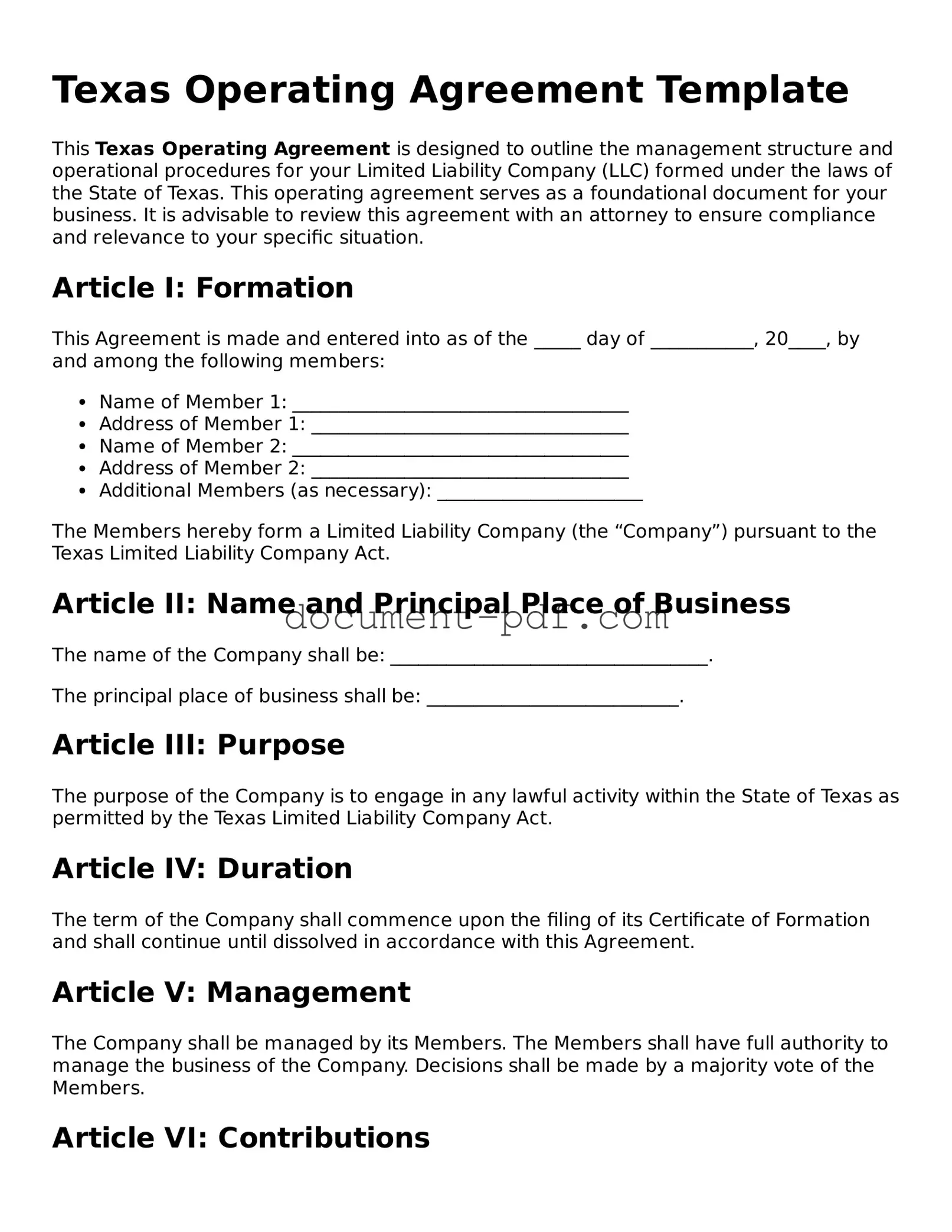Texas Operating Agreement Template
This Texas Operating Agreement is designed to outline the management structure and operational procedures for your Limited Liability Company (LLC) formed under the laws of the State of Texas. This operating agreement serves as a foundational document for your business. It is advisable to review this agreement with an attorney to ensure compliance and relevance to your specific situation.
Article I: Formation
This Agreement is made and entered into as of the _____ day of ___________, 20____, by and among the following members:
- Name of Member 1: ____________________________________
- Address of Member 1: __________________________________
- Name of Member 2: ____________________________________
- Address of Member 2: __________________________________
- Additional Members (as necessary): ______________________
The Members hereby form a Limited Liability Company (the “Company”) pursuant to the Texas Limited Liability Company Act.
Article II: Name and Principal Place of Business
The name of the Company shall be: __________________________________.
The principal place of business shall be: ___________________________.
Article III: Purpose
The purpose of the Company is to engage in any lawful activity within the State of Texas as permitted by the Texas Limited Liability Company Act.
Article IV: Duration
The term of the Company shall commence upon the filing of its Certificate of Formation and shall continue until dissolved in accordance with this Agreement.
Article V: Management
The Company shall be managed by its Members. The Members shall have full authority to manage the business of the Company. Decisions shall be made by a majority vote of the Members.
Article VI: Contributions
The Members hereby agree to make contributions to the Company as set forth below:
- Name of Member 1: ________________________ Contribution: $____________
- Name of Member 2: ________________________ Contribution: $____________
- Additional Contributions (if any): _____________
Article VII: Profits and Losses
The profits and losses of the Company shall be allocated to the Members in proportion to their respective contributions outlined in Article VI.
Article VIII: Distributions
Distributions to Members shall be made at the discretion of the Members in accordance with their respective ownership interests.
Article IX: Indemnification
The Company shall indemnify its Members to the fullest extent allowed by law against any and all expenses and liabilities incurred in connection with the Company.
Article X: Amendments
This Agreement may be amended only by a written agreement signed by all Members.
Article XI: Governing Law
This Agreement shall be governed by and construed in accordance with the laws of the State of Texas.
IN WITNESS WHEREOF, the undersigned have executed this Operating Agreement as of the date first above written.
Member 1 Signature: _____________________________ Date: _______________
Member 2 Signature: _____________________________ Date: _______________
Additional Members (if needed): ______________________________________
